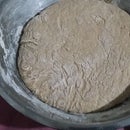Introduction: Gang Saw Thin Rasp
One of my favourite tools is my Japanese Shinto rasp. It is a precision piece of kit and it is one of the best rasps I have ever had but it is some times just a little too big, and other times a lot too big. This little tool make it into the spaces where the bigger rasp will not go. It could be thought of as a manual dado blade. This version permanently sticks them together with spacers and accurate width. You can shortcut this instructable by grabbing a handful of hacksaw blades and taping them together for a quick and dirty solution.
Step 1: Get Some Cheap Blades
I bought a pack of a dozen hack saw blades from a two dollar store. For this one I snapped three of them in half to give me 6 blades 150 mm long.
Step 2: Glue Them Together
Now I glued in some thick art paper as spacers. This allowed me to use fewer blades for a thicker cut. Using thicker, thinner or even no spacers will give slightly different results. The spacers were also needed here because I had all the rounded ends together so I could have a smooth end. this made the tooth direction and set run in opposite directions resulting in the blades not interlocking when put together without spacers.
Then I glued them all together. To do this I just held them flat and together with some spring clamps and wicked in the superglue. Doing it on piece of loose plastic will stop it marking or sticking to your desktop. The piece of plastic in picture 2 was a short bit of packing tape I had recently ripped of the top off a box.
A bit of electrical tape on the end covers the sharp bits.
This one is a handy size for cleaning out slots for ukulele nuts and other tight places the big rasp will not go.
More aggressive and durable than a bit of sandpaper glued to a stick.
This one would require more patience than I possess if used to make a finger or box joint but if you bought blades with a lower tooth count and built a frame saw to hold them it might prove more practical.




